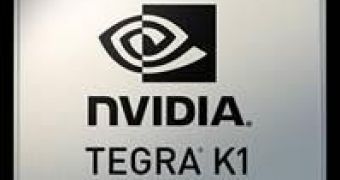During the first press conference held by a major company at Consumer Electronics Show (CES) 2014 trade fair, NVIDIA announced the upcoming availability of the “revolutionary” Tegra K1 mobile processor, a 192-core super chip featuring NVIDIA Kepler architecture.
For those unfamiliar, Kepler architecture powers one of the fastest graphics processing units (GPUS) available on the market, the NVIDIA GeForce GTX 780 Ti.
This means that for the first time, all the features currently available on next-generation PC gaming thanks to the Kepler architecture will now be available on mobile platforms courtesy to the newly announced Tegra K1 chipset.
According to NVIDIA, the new Tegra K1 processor supports complex and powerful gaming engines like Epic Games' Unreal Engine 4. In addition, it is said to provide advanced computation capabilities to make it easier to develop apps for computer vision and speech recognition.
Moreover, Tegra K1 features full support for DirectX 11, OpenGL 4.4 and tessellation, which are gaming technologies specific to PC.
“Over the past two decades, NVIDIA invented the GPU and has developed more graphics technologies than any other company. With Tegra K1, we're bringing that heritage to mobile. It bridges the gap for developers, who can now build next-gen games and apps that will run on any device,” said Jen-Hsun Huang, co-founder and CEO, NVIDIA.
The Tegra K1 has been confirmed to be launched in two pin-to-pin compatible versions, so depending on their needs handset manufacturers can order either of them.
One of the versions will user a 32-bit quad-core, 4-Plus-1 ARM Cortex A15 CPU, whereas the second version uses a custom, NVIDIA-designed 64-bit dual Super Core CPU.
The latter is codenamed “Denver” and delivers very high single-thread and multi-thread performance. NVIDIA states that this particular CPU is based on the ARMv8 architecture, which is integrates the energy-efficient technology of ARM processor architecture.
Furthermore, both versions of NVIDIA's Tegra K1 “super chip” are said to offer top notch graphics and visual computing capabilities powered by the 192-core NVIDIA Kepler GPU.
NVIDIA confirmed the 32-bit version of the chipset is expected to be integrated in devices in the first half of 2014, while the 64-bit model is likely to arrive in the second half of the year.

 14 DAY TRIAL //
14 DAY TRIAL //